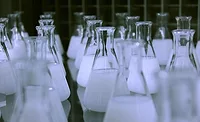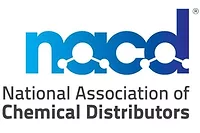Industry Could Face Series Of Challenges On Lead, Including Litigation, Legislation

If the early signals are any indication, 2000 could turn out to be a year loaded with lead headaches for the industry, or at least some coatings manufacturers and former lead-pigment suppliers.
The stories grabbing the biggest headlines, of course, are the lawsuits filed late last year by Rhode Island Attorney General Sheldon Whitehouse and prominent Baltimore attorney Peter Angelos. But those cases, just entering the early phases of what will likely turn into long, tortuous legal harangues, represent only part of a looming offensive against former lead-paint and lead-pigment suppliers.
Also catching the attention of the industries and companies affected are:
- A lawsuit filed in Wisconsin against a group of lead-pigment manufacturers, the Lead Industries Association and landlords.
- Lawsuits filed against several companies by the city of St. Louis and by Santa Clara County, CA, and consideration of lawsuits by city attorneys in several other municipalities, including Providence, RI; Newark, NJ; Milwaukee; and Chicago.
- State legislation that would attempt to address the lead problem. Included are proposals aiming to give the so-called “market share” theory of liability more weight in litigation. The market-share concept holds that suppliers of lead-based architectural paint should be held liable for problems caused by lead, even if it cannot be determined which company supplied the paint found to be the source of a given hazard. The theory, however, has thus far failed to pass muster in court, and was most recently rejected by an appellate court in New York.
Legal Skirmishing Under Way In Maryland, Rhode Island Cases
In the high-profile cases in Rhode Island and Maryland, the opposing parties are in the early stages of pretrial point and counterpoint. Barring a sudden surprise — a decision by the court to dismiss a lawsuit, for example — the parties will likely joust for some time over this motion or that, with the defendants seeking to limit the scope of the plaintiffs’ cases. Trials or court rulings on the cases as a whole could be many months, or even years, away.Marc Whitehead, a Chicago attorney who represents two defendants in the Rhode Island litigation, voiced optimism about the industry’s overall prospects in mounting a defense against various challenges. A key factor working in the industry’s favor, he said, is the simple reality that lead-based house paint has not been sold for several decades.
“This is a nonexistent industry,” he said. “The industry hasn’t sold a product like that for 50 years.” That reality contrasts sharply with the tobacco-industry scenario, where companies have not only continued to aggressively market their products, but have been accused along the way of formulating ways to make tobacco even more addictive. The coatings industry, its representatives point out, voluntarily halted the manufacture of lead-containing house paint years before the government banned its use in the 1970s.
The industry’s position also was shored up recently when a New York state appeals court reversed a lower-court decision that had allowed plaintiffs in a lead-based-paint poisoning case to pursue their argument that companies can be held liable for damages under the market-share liability theory. Thomas Graves, vice president and general counsel of the National Paint & Coatings Association, said the appellate-court ruling should help the industry thwart plaintiffs’ attorneys whose cases are “predicated on courts’ willingness to adopt novel and unfounded theories of liability and recovery.”
Graves said the NPCA is raising a number of issues in mounting a defense, and adamantly disputes plaintiffs’ attorney allegations that any kind of conspiracy was conducted by the coatings companies and the NPCA to mislead the public about the dangers of lead in paint. “To the contrary,” Graves said, “when substitutes for lead became available, such as titanium dioxide, the industry moved to the use of those substitutes.
“Why would we jeopardize our status as an organization by participating in a conspiracy that didn’t serve our economic interest?” he asked. “It’s not in our interest to engage in a conspiracy to benefit one supplier group when there were substitutes.”
Legislation Could Enter The Picture
The favorable court ruling on the market-share concept, however, may not signal the end of the road for this “novel” theory. Two Maryland state legislators earlier this year introduced bills aimed at allowing the market-share concept to be used by courts in considering legal actions against lead paint and pigment suppliers. Bills also were introduced in Massachusetts and Rhode Island, and legislation also could emerge in Illinois and Wisconsin, industry sources said.The Maryland bills, however, were derailed by persuasive arguments made by a panel of lawyers, including former Virginia Attorney General Andrew Miller, former U.S. Attorney General Benjamin Civiletti and former U.S. Solicitor General and constitutional law expert Walter E. Dellinger. Following those arguments, the Maryland House’s Judiciary Committee unanimously rejected the market-share legislation introduced by state Rep. Samuel Rosenberg, D-Baltimore. A companion bill filed in the Maryland state Senate was withdrawn by its sponsor, Sen. Nathaniel McFadden.
Miller, testifying on behalf of the NPCA, reviewed the coatings industry’s record of actions to protect the public from lead-paint hazards, taken years before laws were passed that required such steps. He also provided evidence showing that there had been no “conspiracy” by the industry to continue the use of lead-based paint after its dangers had become known.
Miller, who has been named to serve as a “liaison officer” representing the NPCA in discussions of potential lead-related litigation with various state governments, also testified about the coatings industry’s CLEARCorps program. The program carries out low-cost, in-place management techniques to provide lead-safe housing, and provides lead-education programs in a number of U.S. cities, including Baltimore.
But just as the Maryland legislation was meeting its demise, a bill allowing the market-share theory to be used in lead-paint lawsuits was introduced in Massachusetts by state Rep. Marie St. Fleur, a Boston Democrat. The bill also would allow the state’s attorney general to file suit for state costs resulting from the “presence, removal or abatement of or exposure to lead-based paint.” It also would remove the statute of limitations that requires lawsuits to be filed within a certain number of years following injury or illness caused by exposure to lead-based paint.
Legislation introduced in Rhode Island also would extend the statute of limitations on the filing of lawsuits beyond the current 10-year limit. Industry sources said it was unclear whether either the Massachusetts or Rhode Island bill would come to a vote of the respective legislatures in the near future.
Less worrisome to the industry than the legislative initiatives that have emerged in Massachusetts and Rhode Island are other “model bills” that have been discussed by some state lawmakers. These measures seek to encourage property owners to address potential lead hazards. One such bill made its way into law in Maryland several years ago; it charges landlords a $10 per-unit fee and in return provides the landlords a guarantee of insurance coverage and limited immunity from liability.
“We like the law,” said David Lloyd, the NPCA’s government affairs director, who is closely monitoring legislative initiatives in various states.
The Wisconsin state legislature recently passed a similar measure, which creates lead-safe housing standards and provides limited immunity from lawsuits for landlords whose properties meet the standards.
At the federal level, two U.S. senators late last year introduced legislation designed to allow the government to recover the health-care costs of housing, education and medical treatment for children affected by lead poisoning. The bill would permit lawsuits against lead manufacturers and trade associations representing the manufacturers for costs associated with lead-poisoning prevention.
NPCA, Companies Mount Coordinated Defense Strategy
Acting in response to the various challenges posed by the lead problem, the NPCA and companies named as defendants in the Maryland and Rhode Island lawsuits have embarked on a “coordinated response strategy.” The actions include the following.- The naming of Miller, the former Virginia state attorney general, as a “liaison officer” to contact the attorney general’s offices in states where suits such as the Rhode Island action could arise.
- Alerting the industry’s state-affairs network to be on guard for lead-related actions in the courts and legislatures.
Miller, the liaison officer, has contacted attorneys general in nearly all the states, and NPCA representatives have met with attorneys generals’ officials in a number of states.
Cities Also Joining Fray As Plaintiffs
Adding another dimension to the lead issue is the threat of lawsuits in several cities, including Chicago; Milwaukee; Newark, NJ; and Providence, RI. In one city — St. Louis — the threat has became reality with the recent filing of a suit essentially targeting the same group of defendants involved in the Rhode Island and Baltimore suits. And Santa Clara County, CA, recently became the first county to file suit against pigment and paint manufacturers. The county’s suit seeks an unspecified amount of money to remove lead-based paint from buildings, educate residents about lead-paint risks and provide treatment for children affected by lead poisoning.City or other government officials considering lawsuits are usually prodded along by plaintiffs’ attorneys who stand to share the spoils of potential judgments against the defendants — along the lines of the private-public legal tandems that won multibillion-dollar penalties from the tobacco companies. The actions of these lawyers played a key role in the lawsuit filed by Rhode Island Attorney General Whitehouse and the filing of a lawsuit by private parties in Wisconsin.
Marc Whitehead, who has represented companies frequently named in lead-paint lawsuits, said such suits commonly make arguments based on products and practices that were abandoned long ago. “Most of the allegations concern conduct in the first quarter or first third of the 20th century. That’s a long time ago, and it certainly raises issues as to whether it’s reasonable to go back that far,” Whitehead said. And, he said, “We feel litigation is not the way to solve the lead-paint problem.”
Defendants that have been named in lead-paint lawsuits include the Lead Industries Association, American Cyanamid Co., Atlantic Richfield Co., DuPont Co., The O’Brien Corp., The Glidden Co., NL Industries Inc., SCM Corp. and The Sherwin-Williams Co.
Looking for a reprint of this article?
From high-res PDFs to custom plaques, order your copy today!








